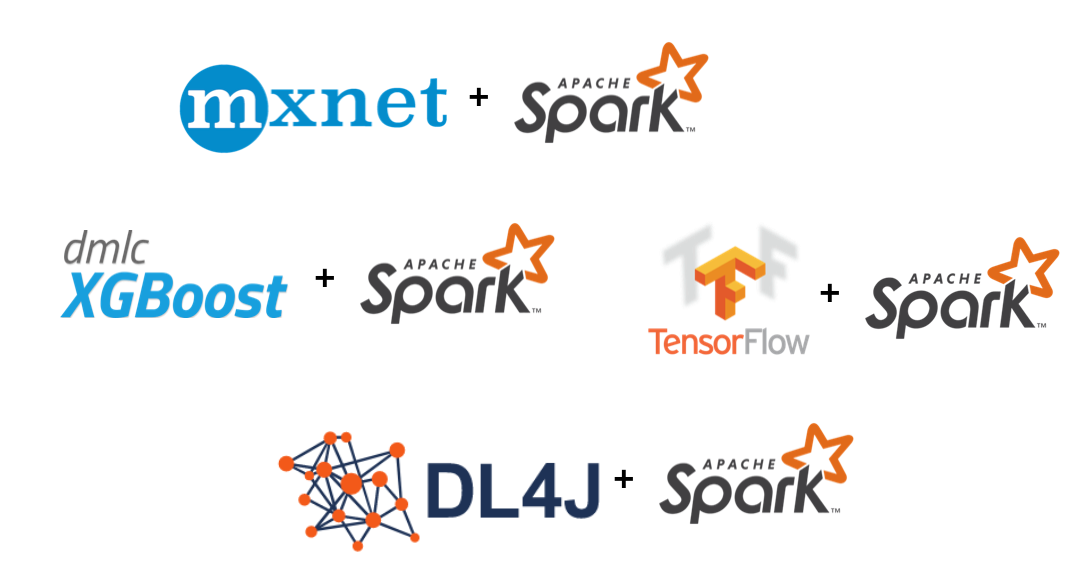Sep 28, 2018 · newsletter
Apache Spark gets a machine learning makeover
Machine learning on Spark: an abridged history
Apache Spark - the cluster computing framework that’s been throwing shade at MapReduce since 2011 - has always been a bit remarkable, because it bridged the divide between data engineering and data science. One of the great promises of Spark was that it would be easy, trivial almost, to scale machine learning and data science to arbitrarily large data. Seven years later, Spark has made its place in data science, but perhaps not in the way we originally hoped.
Spark’s big contribution was that it delivered a very elegant API for dealing with distributed collections of data, termed Resilient Distributed Datasets (RDDs). Compared to alternatives at the time, it was simple to use that API to write certain machine learning algorithms, and since those algorithms were built on RDDs; you got fault tolerance and scale for free. It wasn’t long until a machine learning library built on RDDs was born: MLlib.
Implementing performant, scalable machine learning algorithms in MLlib wasn’t quite as easy as just expressing the logic using RDD transformations, but in some cases it worked quite well. Spark, and by extension MLlib, work well when algorithms can be expressed in parallel, independent tasks that each work on independent chunks of data. Accordingly, MLlib has seen success and adoption with linear models, K-means clustering, decision trees, and some others. But some algorithms, most notably deep learning, are difficult to express using Spark.
In comparison to linear models, optimizing deep learning algorithms over distributed collections requires frequent communication between tasks. Further, deep learning is slow, if you don’t use a framework that has been heavily optimized for that exact use case. Tensorflow, PyTorch, MXNet, etc. all leverage accelerated hardware and heavily optimized C/C++ code to achieve reasonable efficiency. All this is to say that Spark and deep learning aren’t a very good match. So why are we talking about it?
Deep learning needs data (big data!) and that data often needs to be accessed through or pre-processed by Spark. That data is also messy and is probably stored across many datasets in many different storage platforms. Spark makes reading, aggregating, and joining these datasets less awful. So even if Spark isn’t heavily optimized for machine learning, the data that feeds these algorithms often goes through Spark first. This reality led many developers to ponder, “what if we could combine the heavily optimized ML/DL frameworks into Spark?” And with that, the family of XOnSpark libraries came to be.

But Spark hasn’t made it very easy to combine these other libraries, most of which are written in a combination of Python and C++, with Spark. There are three main shortcomings:
- Moving data between Spark processes (JVM) and Python processes is inefficient
- Spark task scheduling doesn’t take GPUs into account
- Deep learning tasks need to constantly communicate gradient/weight updates between them, which is a Spark anti-pattern
Project Hydrogen makes Spark play nice with other ML frameworks
To address each of these issues, the open source community for Spark is undertaking a new initiative, dubbed Project Hydrogen, which is broken up into three main chunks, each designed to solve one of these shortcomings:
The goal of Project Hydrogen is to make it easy and efficient to build deep learning workflows that can run end to end in Spark. This is exciting!
Spark and deep learning can’t ignore each other, and that probably won’t change any time soon. Because of the current complexities, it’s best to avoid distributing deep learning training when possible. But we’re excited to see investment into scaling deep learning with Spark. There are so many great libraries for doing heavily optimized machine learning - PyTorch, Tensorflow, XGBoost, LightGBM - that it’s hugely beneficial to be able to scale these up with Spark.










